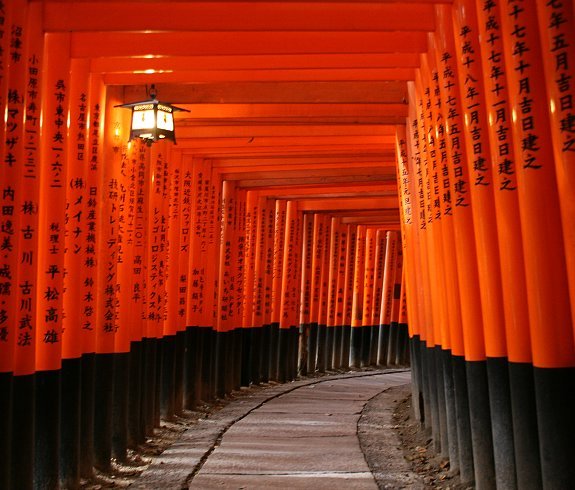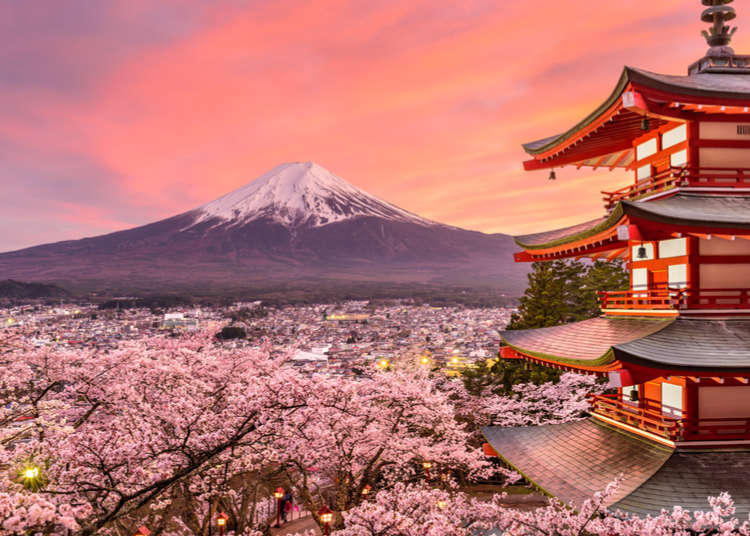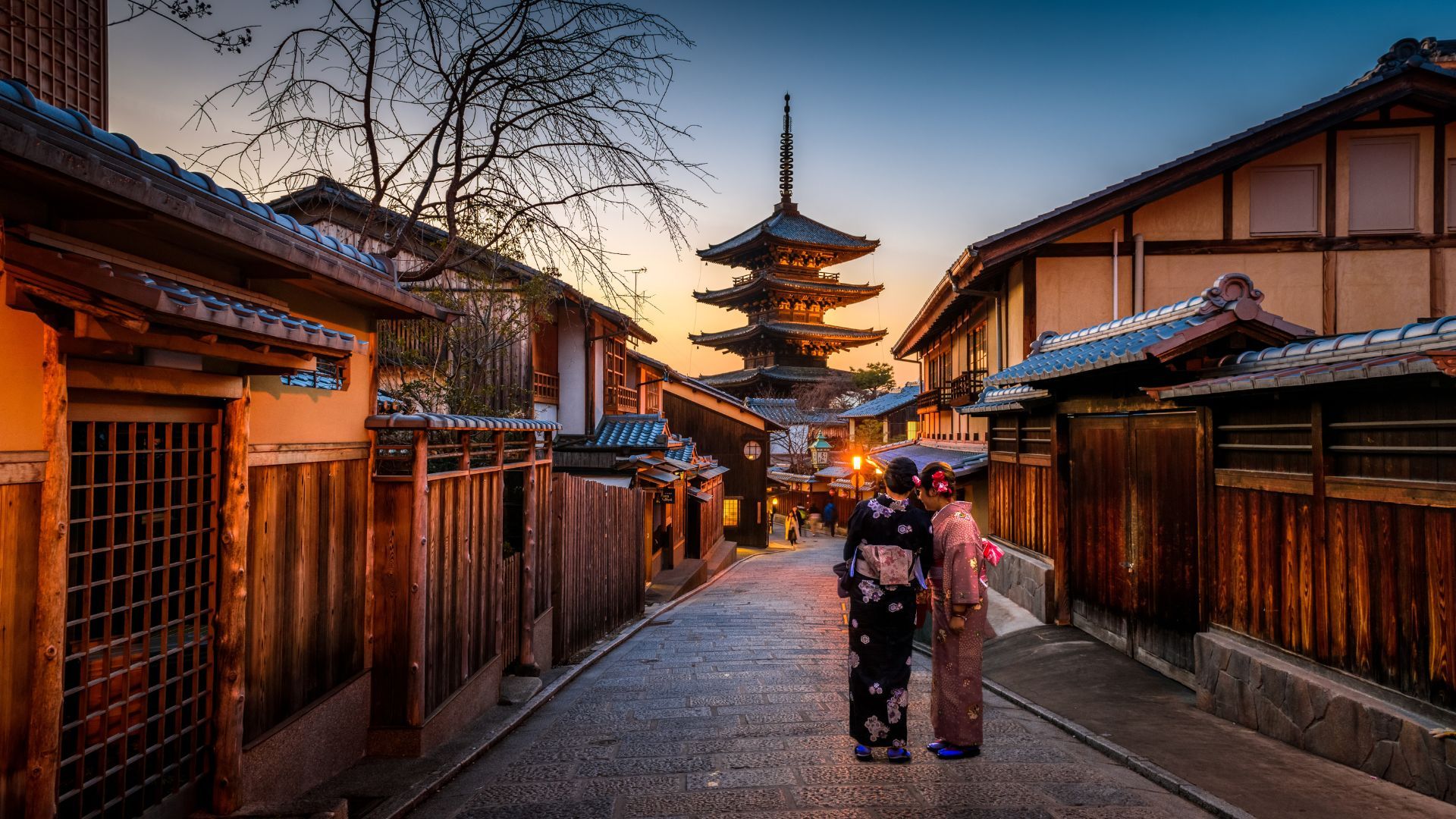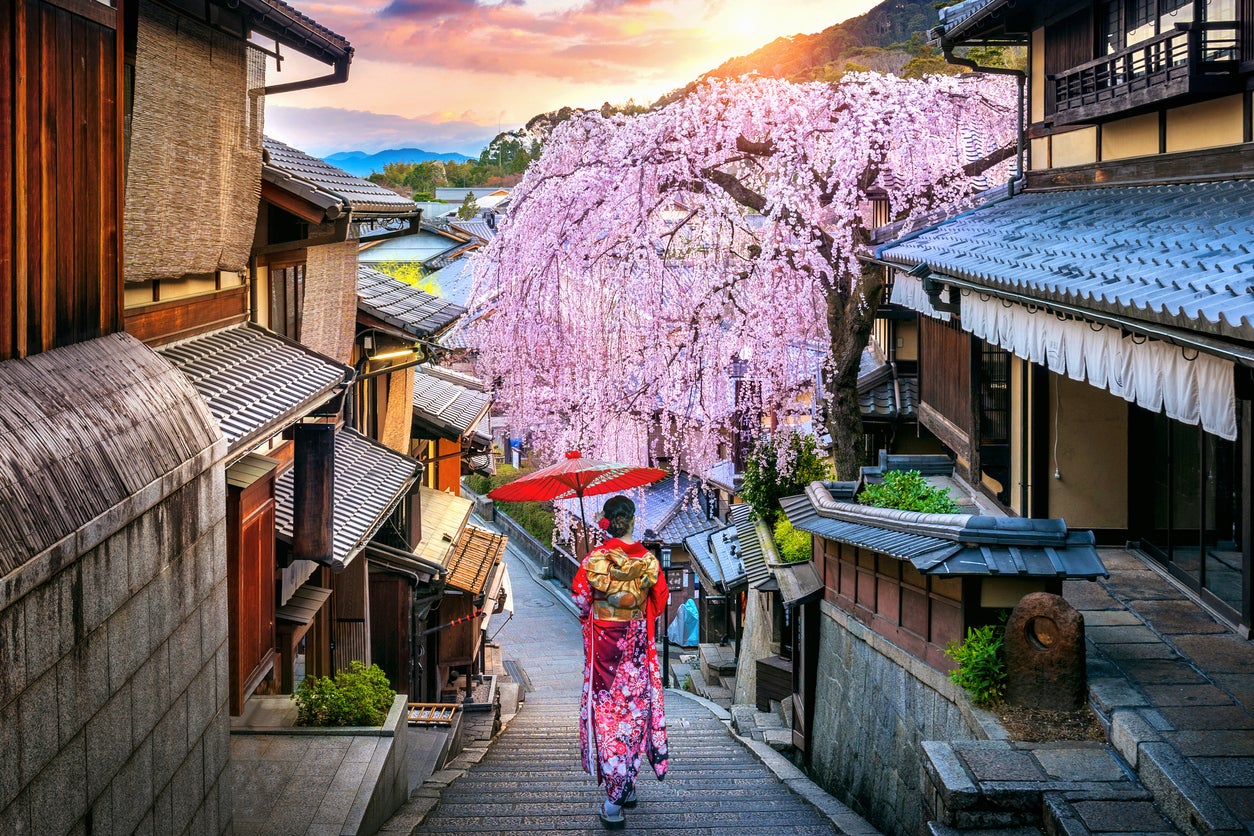Japan, a land rich in culture and tradition, offers travelers an unparalleled experience that captures the essence of its history and modernity. As you embark on your journey, understanding the nuances of Japan travel becomes essential. By immersing yourself in its customs and carefully planning your itinerary, you’ll set the stage for an unforgettable adventure. From mouthwatering cuisine to breathtaking landscapes, every moment in Japan promises to leave a lasting impression. Prepare to explore must-visit destinations and enhance your trip with local experiences that highlight the beauty of this incredible country.
Win a Free Trip to Japan!
Experience cherry blossoms and ancient temples
Researching Japan’s Culture and Traditions
Before embarking on your Japan travel journey, it’s essential to invest time in understanding the nation’s rich culture and traditions. This knowledge can deepen your appreciation and enhance your overall experience. Here are some key areas to consider:
- Language Basics: Familiarize yourself with essential phrases. Simple greetings like "Konnichiwa" (Hello) and "Arigatou" (Thank you) can go a long way in connecting with locals.
- Cultural Norms: Japan places great importance on respect and politeness. Bowing when greeting someone is customary, and understanding this practice can help you make a positive impression.
- Traditional Festivals: Discover the major festivals such as Hanami (Cherry Blossom Viewing) in spring and Tanabata (Star Festival) in summer. Experiencing these events can immerse you in Japanese culture.
- Religious Influences: Learn about Shinto and Buddhism, the two primary religions in Japan. Visiting shrines and temples can provide insight into the spiritual life of the Japanese people.
- Dining Etiquette: Be aware of basic dining customs. For example, it’s polite to say “Itadakimasu” before meals and “Gochisosama deshita” after finishing.
Researching these aspects can significantly elevate your Japan travel experience, transforming mere sightseeing into a meaningful cultural exploration. Start your journey informed, and watch as the vibrant traditions of Japan unfold before you!

Planning Your Itinerary Wisely
When embarking on your Japan Travel adventure, meticulous itinerary planning is crucial for maximizing your experience. Here are some effective strategies to help you create a well-structured plan:
- Prioritize Destinations: Identify your must-visit cities, such as Tokyo, Kyoto, and Osaka. Consider both urban hotspots and serene rural locales like Nara and Hakone for a diverse experience.
-
Allocate Time: Assign the appropriate number of days to each destination. Aim for a balance between sightseeing and relaxation. A sample allocation might include:
- Tokyo: 4 days
- Kyoto: 3 days
- Osaka: 2 days
- Nara: 1 day
- Plan Transportation: Japan boasts an efficient public transport system. Utilize options like the Japan Rail Pass for long-distance travel and local trains or subways in cities. This not only saves time but also enhances your Japan Travel experience.
- Include Seasonal Events: Research festivals, cherry blossom seasons, and other local events. Aligning your itinerary with these occasions can enrich your understanding of Japanese culture.
- Be Flexible: Allow for spontaneity. While having a plan is essential, some of the most memorable moments arise from unexpected discoveries.
By taking these steps in planning your itinerary wisely, you’ll ensure a fulfilling and unforgettable Japan Travel journey.
Choosing the Best Time to Visit Japan
When planning your Japan travel, timing plays a crucial role in your overall experience. Each season offers distinct charms, so consider the following aspects to choose the ideal time for your visit:
Seasons to consider:
- Spring (March to May): Famous for the cherry blossoms (sakura), this season attracts tourists for its breathtaking views. Enjoy festivals like Hanami, where locals picnic under blooming trees.
- Summer (June to August): Although it can be hot and humid, summer brings vibrant festivals (matsuri) and stunning fireworks displays. It’s perfect for coastal activities.
- Autumn (September to November): Experience pleasant temperatures and stunning foliage as leaves turn vibrant shades of red and orange. Autumn festivals showcase local culture and food.
- Winter (December to February): Ideal for snow sports enthusiasts, Japan’s northern regions offer fantastic skiing opportunities. Moreover, winter illuminations in cities are a sight to behold.
Comparison Table of Seasonal Highlights:
| Season | Highlights | Weather Conditions |
|---|---|---|
| Spring | Cherry blossoms, Hanami festivals | Mild, 10-20°C (50-68°F) |
| Summer | Matsuri, coastal events | Hot and humid, 25-35°C (77-95°F) |
| Autumn | Foliage, harvest festivals | Cool, 10-20°C (50-68°F) |
| Winter | Skiing, illuminations | Cold, -5 to 10°C (23-50°F) |
Ultimately, your choice will depend on your interests and what you wish to experience during your Japan travel adventure. Each season provides a unique perspective of Japan’s rich culture and stunning landscapes.
Must-Visit Destinations in Japan
Japan boasts a rich tapestry of destinations, each offering unique experiences for travelers. When planning your Japan Travel, prioritize these must-visit locations to enrich your journey:
-
Tokyo: A vibrant metropolis blending tradition and modernity. Key highlights include:
- Shibuya Crossing: Experience the bustling intersection and nearby shops.
- Asakusa: Home to the iconic Senso-ji Temple.
-
Kyoto: The cultural heart of Japan, known for its stunning temples and gardens. Don’t miss:
- Fushimi Inari Taisha: Famous for its thousands of vermilion torii gates.
- Arashiyama Bamboo Grove: A serene escape amidst towering bamboo.
-
Osaka: Renowned for its culinary scene. Be sure to try:
- Dotonbori: A vibrant area filled with neon lights and street food.
- Osaka Castle: A must-see historical landmark surrounded by beautiful parks.
-
Hiroshima: A city rich in history and healing.
- Peace Memorial Park: A somber tribute to the lives lost during WWII.
-
Okinawa: For tropical bliss, visit this island chain where you can:
- Enjoy stunning beaches.
- Experience unique Okinawan culture.
By including these destinations in your Japan Travel itinerary, you ensure a diverse and unforgettable experience. Each location offers distinct attractions that showcase the beauty and complexity of Japanese culture.

Navigating Japan’s Public Transportation
One of the highlights of Japan Travel is the country’s efficient and reliable public transportation system. Understanding how to navigate it can significantly enhance your travel experience. Here’s a concise guide to help you get around Japan like a local:
-
Types of Transportation:
- Trains: The backbone of Japanese transport. The Shinkansen (bullet train) is famous for its speed and punctuality.
- Subways: Major cities like Tokyo and Osaka boast extensive subway systems that are easy to use.
- Buses: While trains are preferred, buses cover areas not serviced by rail, offering scenic routes.
| Transportation | Speed | Cost | Ease of Use |
|---|---|---|---|
| Trains | Fast | Moderate | Easy |
| Subways | Moderate | Low | Very Easy |
| Buses | Slow | Low | Moderate |
- IC Cards: Invest in an IC card (like Suica or Pasmo) for seamless travel across trains and buses. Load money onto the card and swipe when entering and exiting transportation.
- Apps: Download transportation apps like Hyperdia or Google Maps for route planning, train schedules, and real-time updates.
In summary, navigating Japan’s public transportation is a breeze if you familiarize yourself with the systems. By using trains and subways effectively, you can explore the nation’s rich culture and stunning landscapes, making your Japan Travel experience truly unforgettable.
Understanding Japanese Etiquette
When embarking on your Japan travel adventure, grasping the nuances of Japanese etiquette enhances your experience significantly. Here’s what you need to keep in mind:
- Bowing: A common greeting in Japan is a bow. You don’t need to bow deeply—just a slight bend will show respect.
- Shoes Off: Always remove your shoes when entering someone’s home or traditional establishments like ryokans (Japanese inns). Look for areas designated for shoes and slippers.
-
Dining Etiquette:
- Chopsticks: Avoid sticking chopsticks upright in your rice as it resembles a funeral ritual. Instead, place them on the designated holder or your plate.
- Slurping: Contrary to many cultures, slurping noodles shows appreciation for the meal.
- Quietness: Japanese society values silence in public spaces. Keep your voice low, especially on public transportation.
- Gift-Giving: Presenting and receiving gifts should be done with both hands. If you receive a gift, it’s polite to take a moment to appreciate it before opening.
- Respect: Always practice respect for elders and those in authority. Use polite language, particularly when addressing others.
Understanding these aspects of etiquette not only enriches your Japan travel experience but also endears you to locals. Traveling with cultural sensitivity will create connections that last beyond your visit.
Sampling Authentic Japanese Cuisine
One of the highlights of Japan travel is undoubtedly its exquisite and diverse cuisine. To fully immerse yourself in the culture, sampling authentic dishes is essential. Here are some key points to consider for an unforgettable culinary journey:
- Sushi & Sashimi: Enjoy freshly prepared sushi at local eateries. Opt for omakase style, where chefs curate your meal based on seasonal ingredients.
- Ramen: Explore various regional ramen styles, from the rich tonkotsu of Fukuoka to the soy-based shoyu ramen in Tokyo.
- Tempura: Taste light and crispy tempura vegetables or seafood at specialized restaurants, which showcase this delicate frying technique.
- Takoyaki: Don’t miss this popular street food, made of batter, diced octopus, and topped with bonito flakes and takoyaki sauce.
- Kaiseki: Experience the elegance of kaiseki dining, a multi-course meal emphasizing seasonal ingredients and artistically presented dishes.
To help you choose the best meals, consider the following options:
| Type of Cuisine | Description | Best City |
|---|---|---|
| Sushi | Raw fish with vinegared rice | Tokyo |
| Ramen | Noodle soup with various toppings | Fukuoka |
| Tempura | Battered and deep-fried seafood/vegetables | Kyoto |
| Takoyaki | Octopus balls, a popular street food | Osaka |
| Kaiseki | Traditional multi-course haute cuisine | Kyoto |
When planning your Japan travel itinerary, ensure that food experiences are central to your journey. As you indulge in these culinary delights, remember to savor each bite and appreciate the artistry behind Japanese food.

Finding Unique Accommodations
When planning your Japan travel experience, choosing the right accommodation can significantly enhance your trip. Japan offers a wide range of unique lodging options that reflect its rich culture and traditions. Here are some extraordinary choices to consider:
- Ryokan: Traditional Japanese inns that often feature tatami mat flooring, futon beds, and communal onsen (hot springs). Staying at a ryokan provides a glimpse into Japanese hospitality.
- Capsule Hotels: Ideal for budget travelers, capsule hotels offer small pods for sleeping, emphasizing efficiency and privacy. These futuristic designs are perfect for a brief stay in bustling cities.
- Temple Lodging (Shukubo): Experience the tranquility of Japan’s temples by staying overnight. You’ll often enjoy vegetarian meals and meditation practices, providing an authentic taste of spiritual life.
- Minsuku: Family-run guesthouses that offer a cozy, home-like atmosphere. Staying at a minsuku allows you to interact with locals and learn about their way of life.
Comparison Chart of Accommodation Types
| Accommodation Type | Price Range | Unique Features | Location |
|---|---|---|---|
| Ryokan | $$ to $$$ | Futons, onsen, kaiseki dining | Countryside |
| Capsule Hotel | $ | Compact pods, social areas | Urban areas |
| Temple Lodging | $$ | Meditation, vegetarian meals | Near temples |
| Minsuku | $$ | Family atmosphere, local insights | Rural areas |
Embrace the charm of unique accommodations during your Japan travel, and make memories that last a lifetime!
Enhancing Your Trip with Local Experiences
When embarking on Japan Travel, immersing yourself in local experiences can significantly enrich your journey. Here’s how you can make the most of your time in Japan:
-
Participate in Festivals:
- Join local festivals like Hanami (flower viewing) in spring or the Gion Matsuri in Kyoto. These vibrant events showcase traditional performances, crafts, and local cuisine.
-
Take a Cooking Class:
- Enroll in a cooking class to learn how to make authentic dishes such as sushi or ramen. Not only will you enjoy a delicious meal, but you’ll also understand the cultural significance of each dish.
-
Explore Rural Villages:
- Venture off the beaten path to picturesque villages like Shirakawa-go. Experience traditional thatched-roof houses and local crafts while enjoying breathtaking mountain scenery.
-
Stay with Locals:
- Consider a homestay or a minpaku, which offers lodging with local families. This gives you first-hand insights into daily life and customs in a Japanese household.
-
Participate in Tea Ceremonies:
- Engage in a traditional tea ceremony, where you can learn about the art behind this ancient ritual and its cultural importance.
Summary Table
| Local Experience | Description |
|---|---|
| Festivals | Join local celebrations and enjoy cultural activities |
| Cooking Classes | Learn to cook authentic Japanese meals |
| Rural Village Exploration | Discover traditional lifestyles in scenic locations |
| Homestays | Experience daily life and customs with local families |
| Tea Ceremonies | Understand the cultural significance of tea |
By integrating these local experiences during your Japan Travel, you’ll gain a deeper appreciation for the country’s rich culture and traditions.
Staying Connected During Your Travels
Staying connected during your Japan travel can significantly enhance your experience. Fortunately, Japan offers several options to keep you online and accessible. Here are some practical solutions:
-
Pocket Wi-Fi Rentals:
- Convenient and portable, pocket Wi-Fi devices allow you to connect multiple devices simultaneously. Rent one at the airport for immediate access.
-
SIM Cards:
- Purchase a prepaid SIM card at the airport or local convenience stores. This option works well for travelers who prefer using their own smartphones.
-
Cafés and Restaurants:
- Many establishments provide free Wi-Fi for customers. Look for "Wi-Fi available" signs when you are out exploring.
Additionally, consider these tips for a seamless connection:
-
Download Essential Apps:
- Use apps like Google Maps or Google Translate to navigate and communicate effortlessly.
-
Offline Access:
- Before your trip, download maps and important travel information for offline use. This is particularly helpful in case of poor internet access in rural areas.
-
Local Hotspots:
- Utilize public Wi-Fi hotspots available in tourist areas and train stations for free, albeit sometimes limited, internet access.
By ensuring you’re connected during your Japan travel, you can enjoy a smoother, more enriching journey while discovering everything this beautiful country has to offer!
Frequently Asked Questions
What is the best time to visit Japan for tourism?
The best time to visit Japan largely depends on what you wish to experience. The cherry blossom season in late March to early April offers breathtaking views, while autumn in November showcases stunning fall foliage. Meanwhile, summer offers vibrant festivals and events, though it can be hot and humid. Winter, particularly in areas like Hokkaido, is perfect for skiing and experiencing traditional Japanese hot springs.
Do I need a visa to travel to Japan?
Visa requirements for traveling to Japan vary depending on your nationality. Citizens from many countries, including the United States, Canada, and several European nations, can enter Japan for short stays (up to 90 days) without a visa. However, it’s crucial to check the current visa regulations, as they are subject to change. Always ensure that your passport is valid for at least six months beyond your planned departure.
What are some cultural etiquette tips to keep in mind while in Japan?
Understanding and respecting Japanese cultural etiquette can significantly enhance your travel experience. It is customary to bow as a greeting, remove shoes when entering someone’s home, and avoid speaking loudly in public spaces. When dining, try to refrain from sticking chopsticks upright in rice, as this resembles a funeral offering. Moreover, always express gratitude by saying ‘arigatou gozaimasu’ after a meal or receiving a service.
What are the must-try foods when visiting Japan?
Japan offers a rich culinary landscape, with must-try foods that showcase its diversity. Sushi and sashimi are iconic dishes that should not be missed. Ramen, a flavorful noodle soup, offers regional variations, each with unique tastes. Other delicacies include tempura, which features lightly battered and fried seafood or vegetables, and okonomiyaki, a savory pancake filled with various ingredients. Don’t forget to sample street food like takoyaki and sweet treats like mochi!
Is it easy to navigate transportation in Japan?
Yes, navigating transportation in Japan is generally very easy and efficient. The country boasts an extensive and punctual public transport system, particularly in major cities like Tokyo and Osaka. Trains, subways, and buses connect even remote areas. The Japan Rail Pass can be a cost-effective option for tourists planning to travel across multiple cities. Additionally, signage in English is commonly available, making it user-friendly for international travelers.
